Text
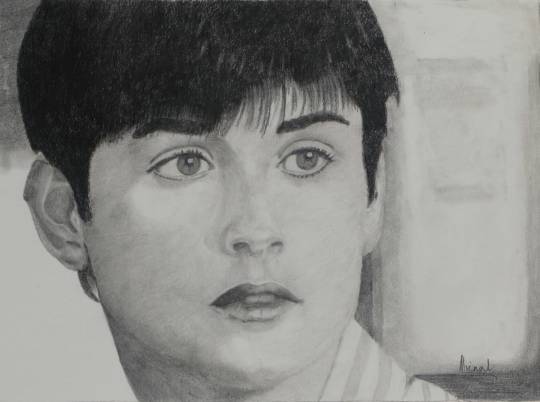
Drawing with Graphite pencil, paper stumps, and Erasers on Fabriano Accademia paper. (10.5x13.5 inches) from a reference photo of Demi Moore from the movie Ghost.
#drawing#drawthisinyourstyle#graphiteart#graphitedrawing#graphite#graphitepencils#portrait#graphiteportrait#graphitepencildrawing#graphitepencilonpaper#instagrampost#facebookposts#DemiMoore
6 notes
·
View notes
Text
KALIGHAT PAINTING

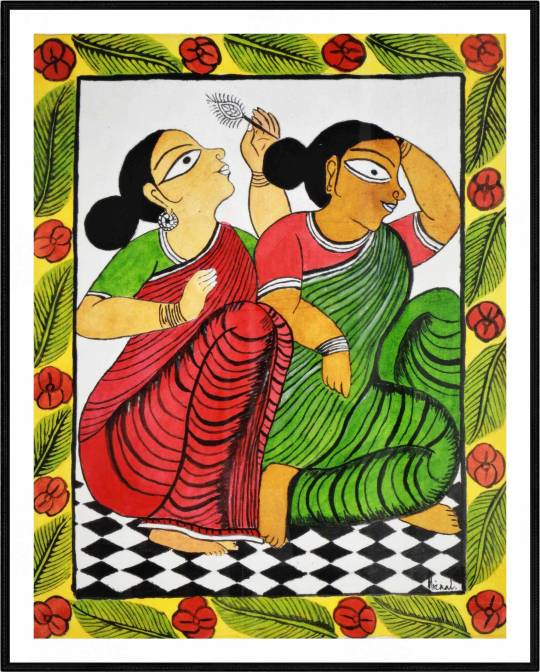

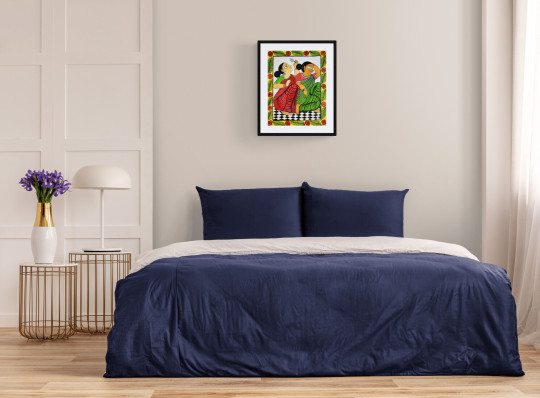
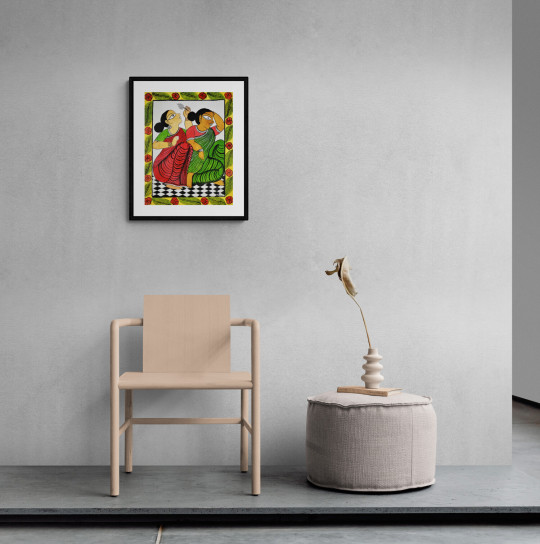
"BENGALI WOMEN" a painting in Watercolour done by me on Fabriano Accademia 240 gsm paper. Inspiration from traditional Kalighat style of painting.
About Kalighat painting.
Era: 19th century.
Location: Market beside the Kali Temple at Kalighat, in Calcutta (now known as Kolkata) then the capital of India.
The visitors to the market will find shops displaying his paintings. The painter is the central character of this story. He is known as a Patua or a Chitrakar.
Patuas started in the village tradition which dates back to the 13th century, as painters of scrolls or pats telling and singing the popular stories of the gods and goddesses.
Meanwhile, the British, having established themselves in the country politically, started to show interest in art, literature, and music. Calcutta attracted these painters to earn a living.
This type of secular painting derided Baboo culture (In British India, baboo often referred to as a native Indian clerk), feminism, social debauchery, religious hypocrisy, and all types of falsehood. Their work found a ready market among middle and lower-middle-class people. The Indian intellectuals of that time despised everything that did not conform to their Victorian ideal.
Rudyard Kipling was charmed by the terse beauty of the art and acquired a lot and donated it to the Victoria and Albert Museum, London.
Paris-based moderns of the early twentieth century vied with each other in acquiring Kalighat Paintings.
The style of painting was tubular anatomy, arbitrary shading along the contours, heavily simplified forms, and rearrangement of the planes, with figures dominating the entire pictorial space without any secondary adornment or props.
The paintings attracted the interest of many foreign travellers who visited the city in the 19th century.
Kalighat painting was the first artistic expression of a subaltern culture in the Indian sub-continent that addressed the consumer directly; it was neither directed by nor produced for the capital or the ruling authority.
Handpainted artwork and Limited edition prints of Kalighat paintings are available for sale. Please check here.
Read my blog here.
#watercolour #watercolour painting #follk art #folk painting #kalighat painting
0 notes
Photo
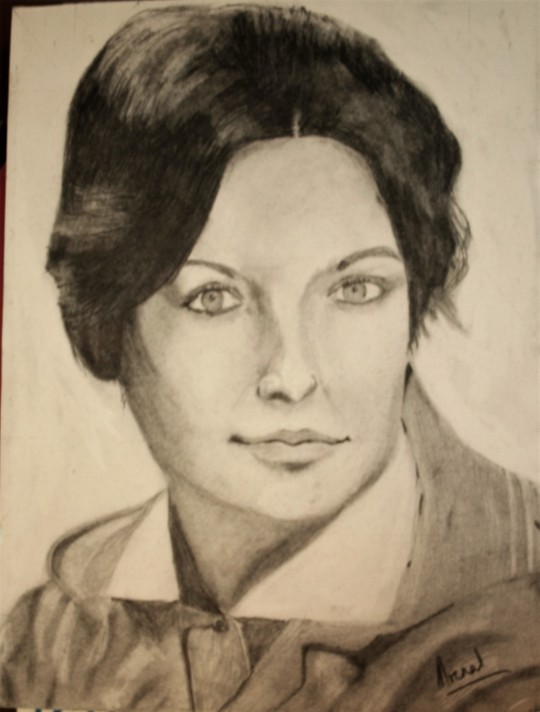
Antonietta- Drawing with Graphite on Drawing Paper.
#drawing#drawinyourstyle#graphite art#graphite drawing#graphite#graphite pencil drawing#graphite pencil#portrait#portrait in graphite#graphite pencil on paper
1 note
·
View note
Photo
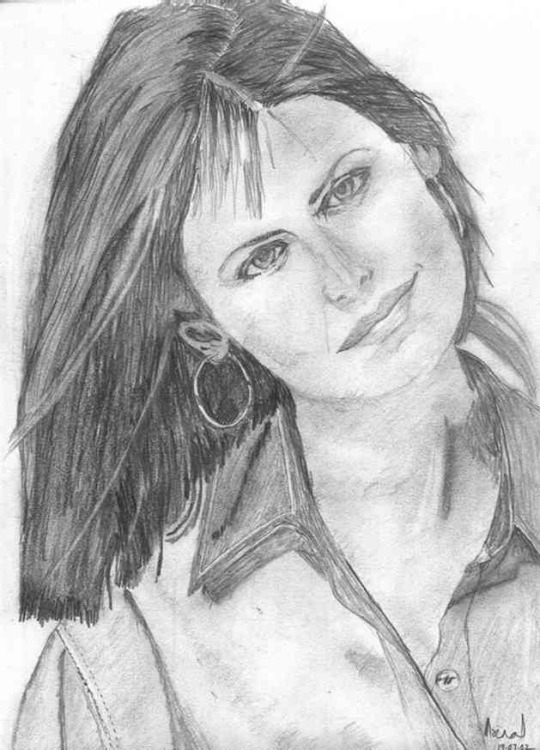
Sara. Graphite drawing on paper.
0 notes
Photo
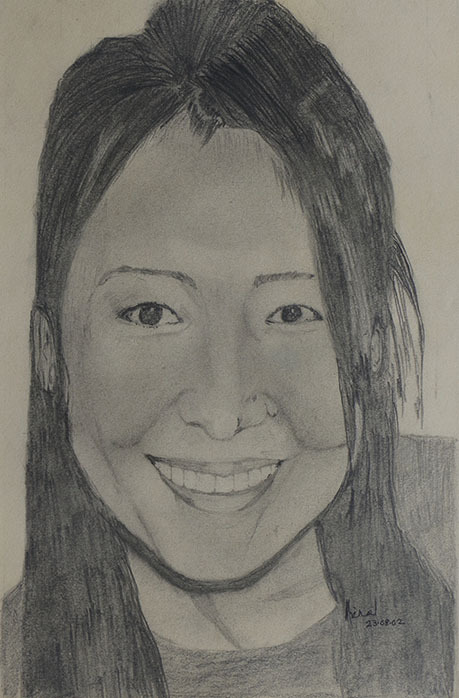
Emily- Graphite drawing. Dimension 24x36cms
#graphite#graphite drawing#graphite pencil drawing#portrait#portrait drawing#graphite on paper#pencil on paper
2 notes
·
View notes
Photo

Antonietta- Drawing with graphite pencil.
2 notes
·
View notes
Photo
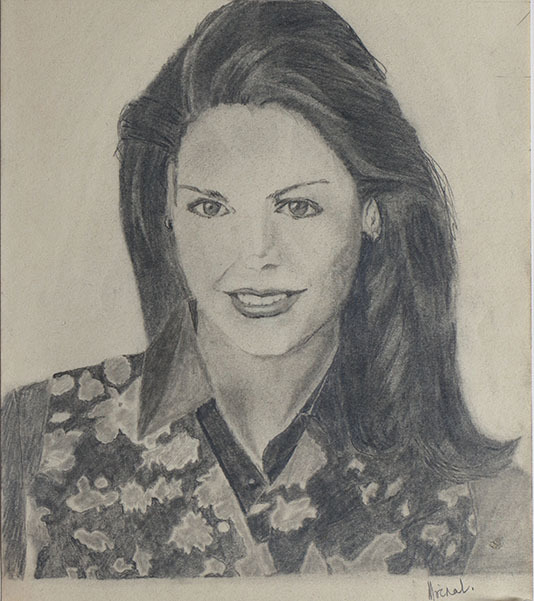
Sara. Drawing with graphite pencil. Dimension 24x26cms
3 notes
·
View notes
Photo
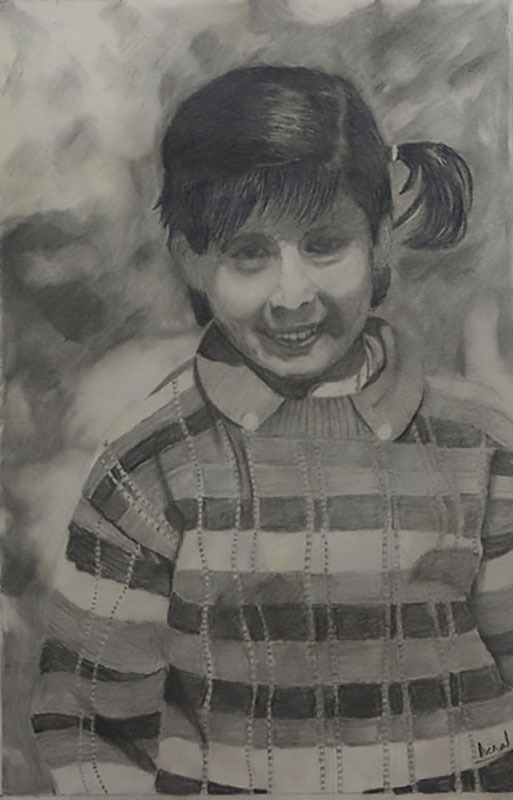
Mom at Candy Floss School. Drawing with graphite pencils. Image dimensions 25.5x39cms.
#drawing#drawinyourstyle#graphiteart#graphitedrawing#graphite#graphitepencil#portrait#graphiteportrait#graphitepencildrawing#graphitepencilonpaper
1 note
·
View note
Photo
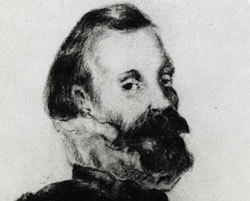


HENDRICK AVERCAMP
On this day of 27th January, Hendrick Avercamp (January 27, 1585 (bapt.) – May 15, 1634 (buried)) was born in Amsterdam, Netherlands.
He studied in Amsterdam with the Danish-born portrait painter Pieter Isaacks and David Vinckboons.
Avercamp was deaf and mute and was known as "de Stomme van Kampen" (the mute of Kampen).
As one of the first landscape painters of the Dutch school, he specialized in painting the Netherlands in winter. Avercamp's paintings are colorful and lively, with carefully crafted images of the people in the landscape. His works give a vivid depiction of sport and leisure in the Netherlands.
Avercamp's work enjoyed great popularity and he sold his drawings, many of which were tinted with water-color. The Royal Collection has an outstanding collection of his works.
Avercamp painted in his studio on the basis of sketches he had made in the winter. Avercamp was famous even abroad for his winter landscapes. The passion for painting skating characters probably came from his childhood as he practiced skating with his parents.
The Flemish painting tradition is mainly expressed in Avercamp's early work. This is consistent with the landscapes of Pieter Bruegel the Elder. Avercamp painted landscapes with a high horizon and many figures who are working on something. The paintings are narrative, with many anecdotes.
Sometimes Avercamp used paper frames, which were a cheap alternative to oil paintings. He first drew with pen and ink. This work was then covered with finishing paint. The contours of the drawing remained. Even with this technique, Avercamp could show the pale wintry colors and nuances of the ice.
Avercamp produced about a hundred paintings. The bulk of his artwork can be seen in the Rijksmuseum in Amsterdam and the Mauritshuis in The Hague.
#hendrick avercamp#famous painters#master painters#famous artists#art history#anniversary of artists#flemish#flemish painters#portraitist
3 notes
·
View notes
Photo

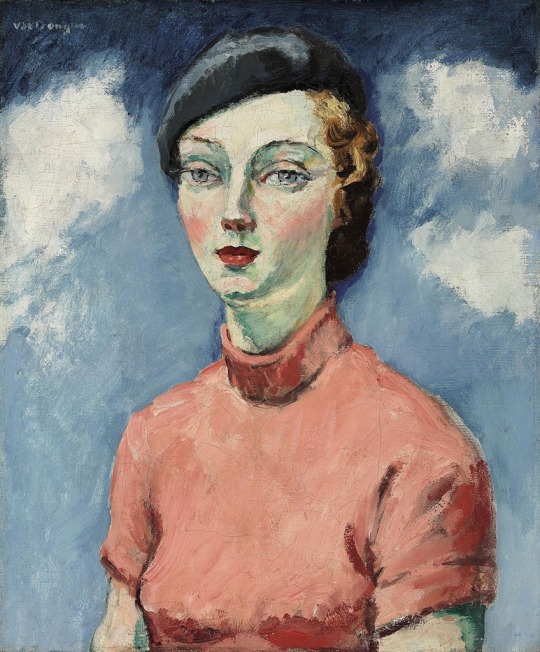
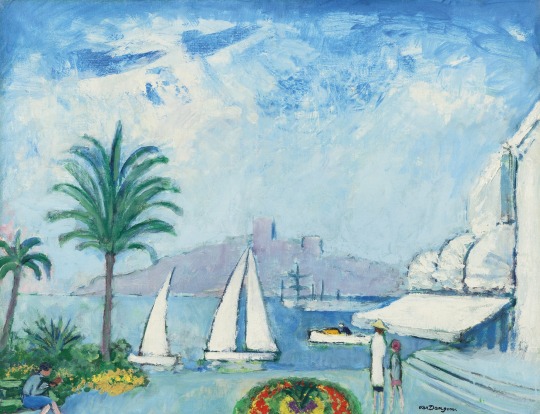
CORNELIS THEODORUS MARIA 'KEES' VAN DONGEN
On this day of 26th January, Cornelis Theodorus Maria 'Kees' van Dongen (26 January 1877 – 28 May 1968) was born in Delfshaven, The Netherlands.
He was a painter who was one of the leading Fauves. Van Dongen's early work was influenced by The Hague School and symbolism and it evolved gradually into a rough pointillist style. He took part at the controversial Salon d'Automne exhibition along with Henri Matisse, André Derain, Albert Marquet, Maurice de Vlaminck, Charles Camoin, and Jean Puy. His style became more and more radical in its use of form and colour. The themes of his work are predominantly centered on the nightlife; he paints dancers, singers, masquerades, and theatre. Van Dongen gained a reputation for his sensuous – at times garish – portraits of especially women.
Kees van Dongen started his studies at the Royal Academy of Fine Arts in Rotterdam, working with J. Striening and J.G. Heyberg. During this period, Van Dongen frequented the Red Quarter seaport area, where he drew scenes of sailors and prostitutes.
Van Dongen was also briefly a member of the German Expressionist group Die Brücke. He was part of an avant-garde wave of painters, including Maurice de Vlaminck, Othon Friesz, Henri Rousseau, Robert Delaunay, Albert Marquet, Édouard Vuillard, who aspired to a renewal of painting which they thought was stuck in neo-impressionism.
In addition to selling his paintings, Van Dongen also gained an income by selling satirical sketches to the newspaper Revue Blanche.
As a fashionable portraitist, he was commissioned for subjects including Arletty, Louis Barthou, Sacha Guitry, LeopoldIII of Belgium, Anna de Noailles, Madame Grès, and Maurice Chevalier.
From 1959, Kees van Dongen lived in Monaco.
An extensive collection of van Dongen's work is held by the New National Museum of Monaco.
His work was also part of the painting event in the art competition at the 1932 Summer Olympics
#cornelis theodorus maria 'kees' van dongen#'Kees' van Dongen#famous painters#famous artists#master painters#art history#anniversary of artists#pointilism#fauvism#symbolism
3 notes
·
View notes
Photo
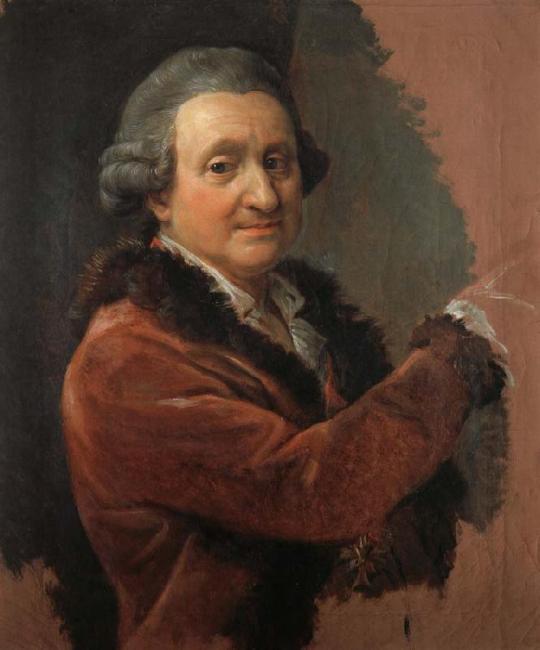

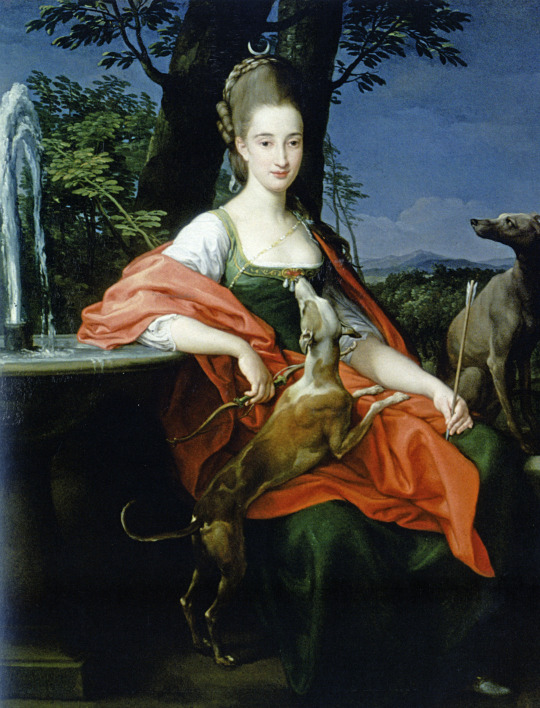
POMPEO GIROLAMO BATONI
On this day of 25th January, Pompeo Girolamo Batoni (25 January 1708 – 4 February 1787) was born in Lucca, Italy.
He was a painter who displayed a solid technical knowledge in his portrait work and in his numerous allegorical and mythological pictures. The foreign visitors travelling Italy and reaching Rome during their "Grand Tour" made the artist specialize in portraits. Batoni won international fame largely thanks to his customers of noble origin, kings and queens of Poland, Portugal, and Prussia, the Holy Roman Emperors Joseph II and Leopold II, Popes Benedict XIV, Clement XIII, Pius VI, Elector Karl Theodor of Bavaria, and many more.
Batoni's style took inspiration from French Rococo, Bolognese classicism, and the work of artists such as Nicolas Poussin, Claude Lorrain, and Raphael. As such Pompeo Batoni is considered a precursor of Neoclassicism.
Pompeo Batoni apprenticed with Agostino Masucci, Sebastiano Conca and/or Francesco Imperiali.
Batoni owed his first independent commission to a sudden storm, when Forte Gabrielli di Gubbio, count of Baccaresca took cover under the portico of the Palazzo dei Conservatori on the Capitoline Hill. Here the count met Batoni, who was drawing the ancient bas-reliefs and the paintings of the staircase of the palace. Gabrielli was so awed by his talent that he offered him to paint a new altarpiece for the chapel of his family in San Gregorio Magno al Celio, the Madonna on a Throne with Child and four Saints and Blesseds of the Gabrielli family
His notable followers include Vincenzo Camuccini, Angelo Banchero , Benigno Bossi , Paolo Girolamo Brusco , Antonio Cavallucci , Marco Cavicchia, Adamo Chiusole, Antonio Concioli , Domenico Conti Bazzani , Domenico Corvi , Felice Giani , Gregorio Giusti, Gaspare Landi , Nicola Antonio Monti , Giuseppe Pirovani , Pasquale Ciaramponi, Carlo Giuseppe Ratti, Henry Benbridge Maria Cosway Ivan Martos , Johann Gottlieb Puhlmann, and Johannes Wiedewelt .
The painter Benjamin West, while visiting Rome would complain that Italian artists "talked of nothing, looked at nothing but the works of Pompeo Batoni".
#pompeo girolamo batoni#pompeo batoni#master painters#famous painters#famous artists#art history#anniversary of artists#french rococo#bolognese classicism#neoclassicism
7 notes
·
View notes
Photo
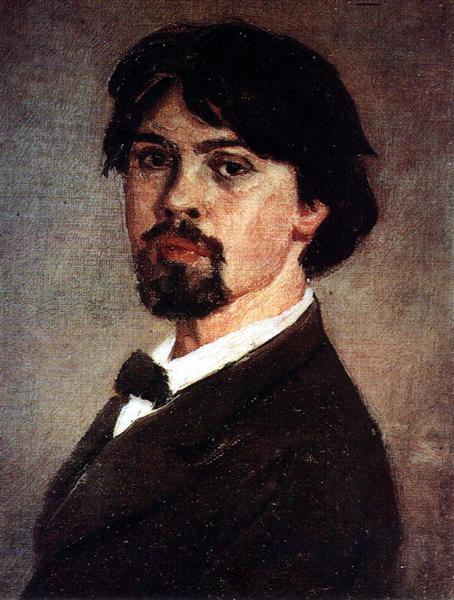
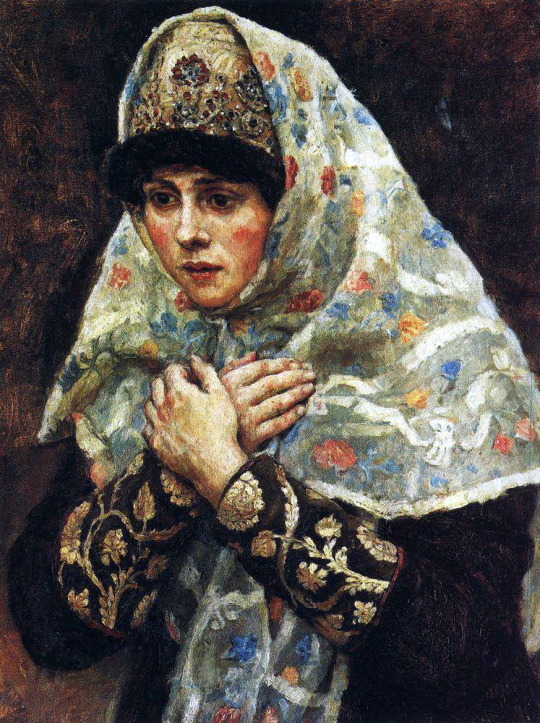

VASILY IVANOVICH SURIKOV
On this day of 24th January, Vasily Ivanovich Surikov (24 January 1848 – 19 March 1916) was born to an old Yenisei Cossack family descending from Don Cossacks that had settled in Siberia, Russia.
He was a Realist history painter. Many of his works have become familiar to the general public through their use as illustrations.
He came into contact with Pavel Zamyatin, the Governor of the Yenisei, who was able to find him a patron: Pyotr Kuznetsov, a local merchant who owned several small gold mines.
He rode on horseback to Saint Petersburg but was unable to qualify for admission to the Imperial Academy of Arts, so he studied at the drawing school of the Imperial Society for the Encouragement of the Arts. A year later he gained admission to the Academy.
He studied with Pavel Chistyakov, Bogdan Willewalde, and Pyotr Shamshin, winning several medals. His great attention to composition earned him a nickname, "The Composer". In 1875, he graduated with the title of Artist, first degree.
He received a commission to paint murals at the Cathedral of Christ the Saviour, and he moved to Moscow.
On the 100th anniversary of his birth, his estate in Krasnoyarsk became a museum.
A biographical movie of his life (Vasily Surikov) was made by Mosfilm.
Numerous streets and squares throughout Russia have been named after him, as well as a crater on Mercury.
#vasily ivanovich surikov#famous painters#master painters#famous artists#art history#anniversary of artists#realism
4 notes
·
View notes
Photo



ÉDOUARD MANET
On this day of 23rd January, Édouard Manet (23 January 1832 – 30 April 1883) was born in Paris, France.
He was one of the first 19th-century artists to paint modern life and a pivotal figure in the transition from Realism to Impressionism.
His early works, The Luncheon on the Grass (Le déjeuner sur l'herbe) and Olympia, caused great controversy and served as rallying points for the young painters who would create Impressionism. Today, these are considered watershed paintings that mark the start of modern art.
He enrolled at secondary school, the Collège Rollin. Later, Manet enrolled in a special course of drawing where he met Antonin Proust, future Minister of Fine Arts and lifelong friend.
Manet visited Germany, Italy, and the Netherlands, and was influenced by Frans Hals, Diego Velázquez and Francisco José de Goya.
Manet had two canvases accepted at the Salon in 1861. A portrait of his mother and father, who at the time was paralysed and robbed of speech by a stroke, was ill-received by critics. The other, The Spanish Singer, was admired by Theophile Gautier and placed in a more conspicuous location as a result of its popularity with Salon-goers. Manet's work, which appeared "slightly slapdash" when compared with the meticulous style of so many other Salon paintings, intrigued some young artists. The Spanish Singer, painted in a "strange new fashion caused many painters' eyes to open and their jaws to drop.
Manet became friends with the Impressionists Edgar Degas, Claude Monet, Pierre-Auguste Renoir, Alfred Sisley, Paul Cézanne, Camille Pissarro and Berthe Morisot.
Manet resisted involvement in Impressionist exhibitions, partly because he did not wish to be seen as the representative of a group identity, and partly because he preferred to exhibit at the Salon.
His works comprise 430 oil paintings, 89 pastels, and more than 400 works on paper.
#édouard manet#famous painters#famous artists#master painters#art history#anniversary of artists#impressionism#realism
0 notes
Photo

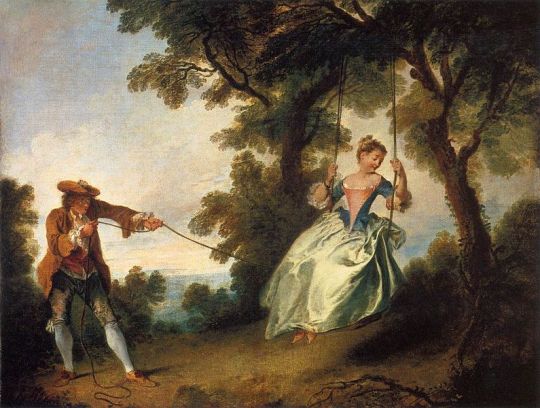

NICOLAS LANCRET
On this day of 22nd January, Nicolas Lancret (22 January 1690 – 14 September 1743) was born in Paris, France.
He was a brilliant depicter of light comedy which reflected the tastes and manners of French society under the Regent, the Duke of Orleans.
Lancret’s first tutor was Pierre d'Ulin, but his acquaintance with and admiration for Watteau induced him to leave Ulin for Gillot.
Two pictures painted by Lancret and exhibited on the Place Dauphine had a great success, which laid the foundation of his fortune, and, it is said, estranged Watteau, who had been complimented as their author. In 1718 he was received as an Academician, from thereon becoming a much- respected artist, especially amongst the admirers of Watteau. He completed works to decorate the Palace of Versailles, while his style was later to prove popular with Frederick the Great. Lancret's popularity was reflected by the decision to make him a councillor at the Academie.
Although he completed several portraits and historical pieces his favourite subjects were balls, fairs, village weddings, and so forth. In this respect, he was typical of Rococo artists.
The British Museum possesses an admirable series of studies by Lancret in red chalk, and the National Gallery, London, shows four paintings—the "Four Ages of Man" (engraved by Desplaces and l'Armessin), cited by d'Argenville amongst the principal works of Lancret.
Lancret was single for much of his life; however, at the age of 51, he married the 18-year-old grandchild of Boursault, author of Aesop at Court. Supposedly Lancret was induced to marry her after finding her and her dying mother living in poverty in an attic room and hearing that the daughter was soon to be compelled to enter a convent.
Lancret died of pneumonia at the age of 53.
0 notes
Photo



OLIVIER STREBELLE
On this day of 20th January, Olivier Strebelle (20 January 1927 – 29 July 2017) was born in Brussels, Belgium.
He was a sculptor. His monumental (usually bronze) sculptures adorn many public places in Brussels as well as in Germany, Israel, Italy, Russia, Singapore, Switzerland, and the United States.
Strebelle was a prolific artist for more than 65 years, and his works are found in private collections and public settings around the world. His style has evolved from robust, organic abstract forms to the sinuous lines seen in Athletes' Alley, on the site of the Beijing Olympic Games.
Athletes Alley is a sculpture meant as a gift from Belgium to the city of Beijing but was not completed in time. It opened shortly after the games ended having cost over 5 million euros.
The production of Athletes Alley involved a technological collaboration between the image laboratory of Université Libre de Bruxelles, Tsinghua University, a French engineering consultancy specialising in metallic frame-works (C&E Ingénierie), and a German software company, Sofistik.
The abstract installation is composed of 5 tubular polished stainless steel modules that reach up to 20m in height and 100m in length (weighing 120T) and is meant to evoke the Olympic rings.
His sculpture The Abduction of Europa (French: L'Enlèvement d'Europe) has been on display in the Square of Europe, Moscow.
0 notes
Photo

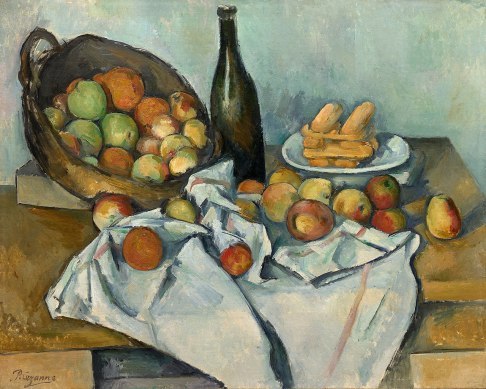
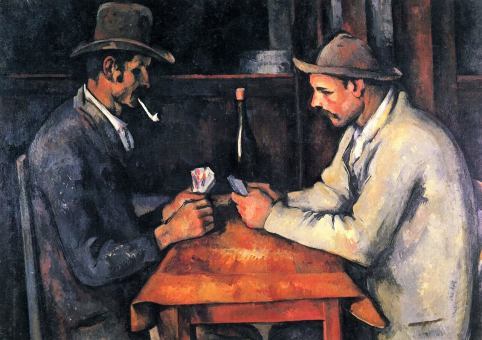
PAUL CÉZANNE
On this day of 19th January, Paul Cézanne (19 January 1839 – 22 October 1906) was born in Aix-en-Provence, France.
He was a Post-Impressionist painter whose work laid the foundations of the transition from the 19th-century conception of artistic endeavor to a new and radically different world of art in the 20th century.
Cézanne is said to have formed the bridge between late 19th-century Impressionism and the early 20th century's new line of artistic enquiry, Cubism. Cézanne's often repetitive, exploratory brushstrokes are highly characteristic and clearly recognizable. He used planes of colour and small brushstrokes that build up to form complex fields. The paintings convey Cézanne's intense study of his subjects. Both Matisse and Picasso are said to have remarked that Cézanne "is the father of us all".
At the age of ten Cézanne entered the Saint Joseph school in Aix. Cézanne entered the Collège Bourbon in Aix (now Collège Mignet), where he became friends with Émile Zola, who was in a less advanced class, as well as Baptistin Baille—three friends who came to be known as "Les Trois Inséparables" (The Three Inseparables).
In Paris, Cézanne met the Impressionist Camille Pissarro. And the relationship between them was that of master and disciple.
Cézanne's paintings were shown in the first exhibition of the Salon des Refusés, which displayed works not accepted by the jury of the official Paris Salon.
Along with the work of Vincent van Gogh and Paul Gauguin, the work of Cézanne, with its sense of immediacy and incompletion, critically influenced Matisse and others prior to Fauvism and Expressionism.
Cézanne's painting Rideau, Cruchon et Compotier sold for $60.5 million, The Card Players was sold for a price of about $250 million.
Cézanne fainted while working and did not recover and he died of pneumonia.
#paul cézanne#famous painters#famous artists#master painters#art history#anniversary of artists#impressionism#cubism#fauvism
0 notes
Photo


PETER ALMA
On this day of 18th January, Peter Alma (18 January 1886– 23 May 1969) was born in Medan, Indonesia.
He attended the Royal Academy of Art, The Hague.
On the recommendation of Franz Seiwert he was employed by the Gesellschafts- und Wirtschaftsmuseum working with Gerd Arntz and Augustin Tschinkel on the development of Isotypes.
He travelled to Moscow with Arntz and Otto Neurath to work at IZOSTAT (“All-union Institute of Pictorial Statistics of Soviet Construction and Economy," an agency of the Soviet government that designed, created, published, and distributed graphic representations of Soviet industry that were easily understandable without written explanations).to help them draw up pictorial images for statistics of the Five Year Plans.
Alma was a member of Nederlandsche Vereeniging voor Ambachts- en Nijverheidskunst (V.A.N.K.) the Dutch Association for craft and craft art.
The Amsterdam Museum keeps a number of his works in their depot.
0 notes